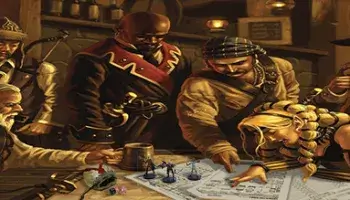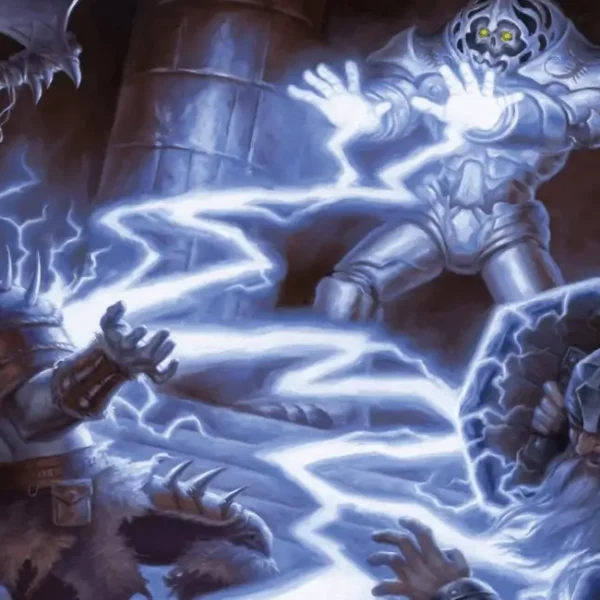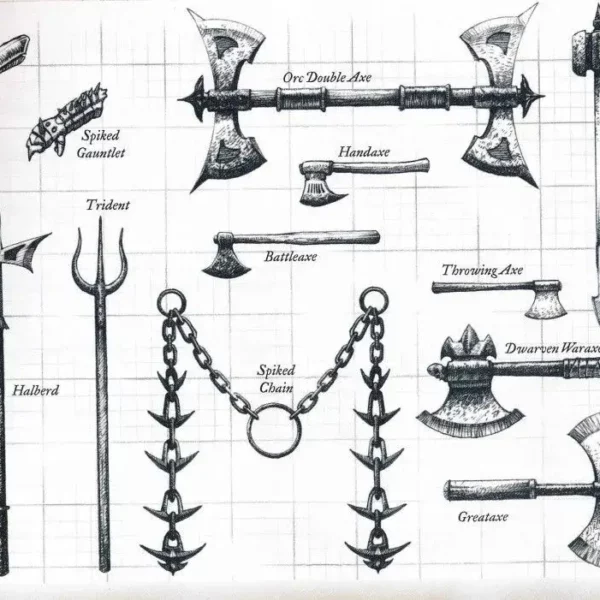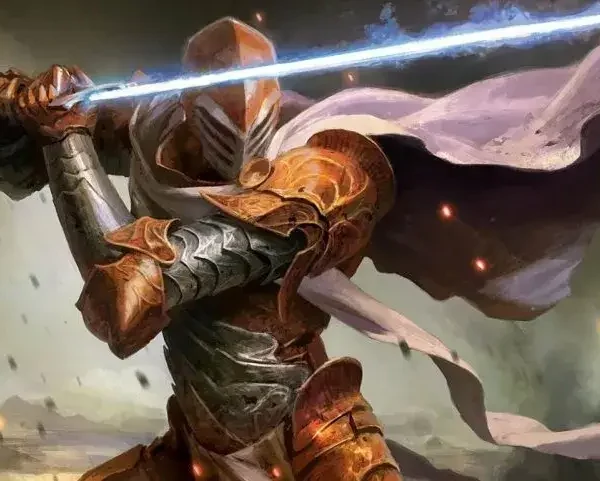Class ability Expertise doubles a character’s bonus on a skill’s competence.
In certain situations, multiclassing simply for this talent is worth the effort, as it’s one of the few class skills that allow you to go over the 5e soft bonus maximum of +10.
However, this isn’t always the case.
Having a +15 acrobatics bonus isn’t really necessary for a fighter, and the three levels you spent in bard to achieve it may be better spent elsewhere.
In this tutorial, we’ll discuss about what classes earn expertise, why it makes sense to multiclass, and why expertise could be the finest all-around talent in the whole game.
Who Gets Expertise?
A “perfect” expertise allows Bards (lvl 3) and Rogues (lvl 1) to choose any talent and double their competence.
Knowledge Clerics (lvl 1) receive class-based expertise at the next lower level, allowing them to develop proficiency in the skills that Knowledge Clerics specialize in (Arcana, History, Nature, or Religion).
Class/race knowledge at the lower end of the spectrum would fall under this category.
A boost to Charisma is granted to Draconic Sorcerers when they converse with dragons of the same kind as themselves, while Dwarven Stonecunning grants expertise on History tests related to stone craftsmanship.
These are more of a convenience when you need them than something you should actively seek out.
In the playtest handbook for Unearthed Arcana, the Practiced Expert feat is one of the most hardest to obtain.

The DM’s consent is required for this, and you only gain mastery in one skill.
To obtain the accomplishment, you’ll have to give up a point boost to your Ability Score.
Obviously, certain kinds of knowledge are more useful than others.
Our primary focus will be on Bards and Rogues, as well as when it’s appropriate to multiclass.
How To Get Expertise If You’re Not a Bard/Rogue?
Multiclassing, in my opinion, is the greatest alternative.
A Bard or a Rogue’s competence is far superior to that of any race’s feats or racial talents.
In D&D, multiclassing is always a tricky decision.
For the simple reason that, despite the fact that it might offer up new talents and play styles, it effectively keeps your primary class behind in terms of leveling.
You should always check to see if the benefits of multiclassing outweigh the disadvantages.
I don’t think it’s important to multiclass for expertise unless you’re using this ability 2-3 times a session.
Without it, you’ll be OK.
The synergies between the courses I’m advocating are excellent, but even with that, I wouldn’t encourage multiclassing all the time, mostly because of the reasons outlined above.
Take one of two options, which I’ll explain in further detail below.
The Bard 3 multiclass is the first option, which focuses on support.
Casters should generally choose this approach since it provides an extremely simple bonus action option to aid the squad.
Rogue 1, Rogue 2, or Rogue 3 all are viable options for the damage-oriented build.
You may choose how Rogue like you, want to get.
In general, melee-focused builds benefit most from this because it expands their engagement choices and offers them more to accomplish outside of battle.
The Bard 3 Build
Here, I’ll take Wizards as an example since I believe they have the most to gain from this experiment.
However, this is useful for any class that doesn’t have a strong additional action ability, including casters.
Wizards are extremely powerful, but they lack a few traits that prevent them from being used in a wide range of situations.

Specifically, the ability to engage in melee combat and the ability to take further actions.
Bard 3 protects against these weaknesses in two different methods.
It is possible to subclass your Bard 3 to the School of Valor and get proficiency in medium armor, shields, and martial weapons if you choose this option.
You may not have the most impressive physical numbers to back them up, but you can still utilize them in a pinch if you need to.
In addition, you receive the potent bonus action ability of Inspiration.
As a result, you can continue to hurl fireballs in the assistance of your squad.
That’s not to say that fireballs have any significance.
Nevertheless, a d6 has been added to the dex save of the Monk who refused to move.
All of this is in addition to the expertise you’ll be able to earn.
Intuition and counter-spelling like the gods are possible thanks to arcana-pumping, and you’ll never again mistake a magical trap.
If you haven’t already reached Wizard 5 or 7, you’ll have access to the powerful mid-level spells, I think this is an excellent multiclass.
The Rogue X Build
We’ll focus on Fighters in this section, but the same principles apply to every class.
As a general rule, I prefer the Rogue 1 multiclass above the Bard 3 multiclass in terms of value.
For starters, you’ll just have to drop one level into Rogue, but you’ll gain a slew of advantages.
Thieves Tools proficiency plus two other talents are available to you for the low price of 25gp.
That’s already rather impressive for a level-up.
There’s also a special attack known as Sneak Attack:
As long as you hold the advantage on the attack roll, you can inflict an additional 1d6 damage on one monster every round.”
As the ability’s name implies, it’s meant to be used for sneak assaults, but let’s walk through an example.

With your strength of 16 (+3), you elect to attack as a Fighter 3 Rogue 1 (subclassed into Battle Master).
You elect to use your extra action on the first turn to swing your greatsword 2d6+3 and to activate the Battle Master’s Feinting Attack ability.
As a bonus action on your turn, you can expend one superiority die and target a creature within 5 feet of you as a feint.
Against that foe, your next attack roll is favored.
The superiority die can be added to the attack’s damage roll if it strikes.”
You get an edge in the following turn, allowing you to use Sneak Attack to its full potential.
You deal 2d6+3+d8(superiority die)+d6 with your greatsword as it slashes through the air (sneak attack).
Please, please, please do not get lucky and double every single one of your attacks.
After that, you may continue this for as many superiority dice that are available.
It’s not the most effective method of dealing with damage.
It’s a bonus, but only when weighed against the Battle Master’s many other advantages.
With this build, you acquire extra Sneak Attack dice and new methods to utilize them as you level up as a rogue.
In addition, as you progress through Fighter, you gain stronger and more advanced dice and a wider range of alternatives for face-to-face battle.
It’s amazing how well these courses work together.
The same synergy may be seen in every class that can gain an edge in combat.
For the most part, the sky is the limit in terms of how rogue like you want your game to be.
In addition, there’s the whole “expertise” thing.
That’s also quite great.
When To Look For Expertise?

The level of skill is astounding.
Those classes with a high frequency of skill checks will benefit from increased consistency.
Bards and Rogues are the two classes that make up the majority of these classes, and their whole gameplay relies on Charisma feats.
To fulfill their class purpose, most other classes are not needed to pass skill tests 100% of the time.
Expertise is a wonderful perk for them, though.
So if you want to play a character that is a combination of the classes, I propose multiclassing to Bard 3 or Rogue X.
To play a charming traveling magician or a bounty hunter who isn’t hesitant to do what he needs to obtain a catch, you should multiclass into these two professions.
Despite its best efforts, the Player’s Handbook will never be able to portray every potential character concept.
Don’t be scared to experiment with multiclassing if you can’t explain something in a single class or subclass.
If it better suits your personality, nothing is a bad choice.









